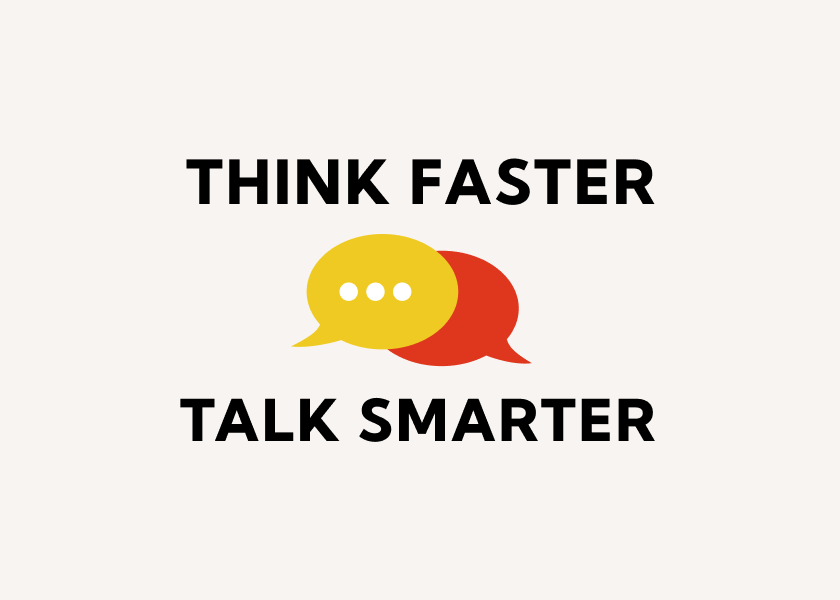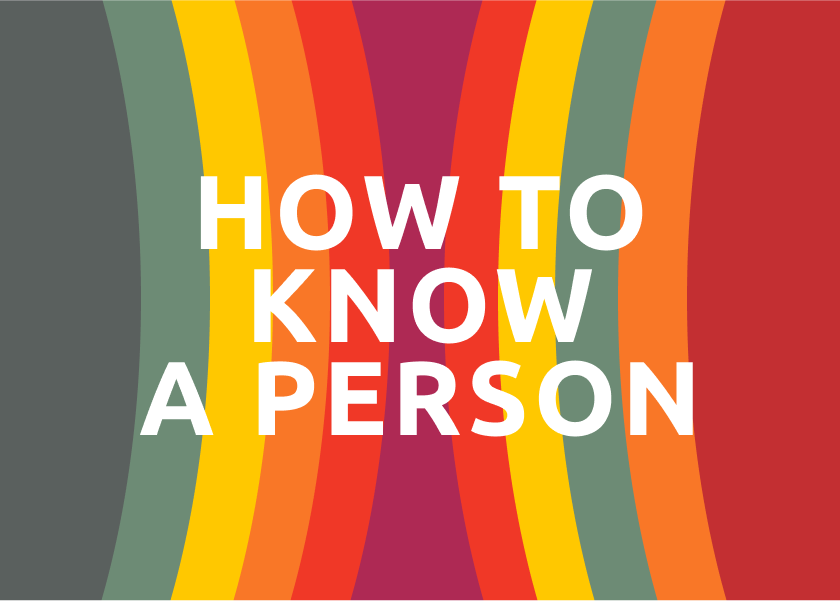Think Faster, Talk Smarter by Matt Abrahams - Summary
Conquer speaking anxiety and confidently communicate in any situation! Learn the Think Faster, Talk Smarter method and specific techniques to shine in impromptu moments. This book will take you from novice to ninja.

The following is a summary and review of the book Think Faster, Talk Smarter by Matt Abrahams.
How to Speak Well When It Matters the Most
Have you ever felt your mind go blank when put on the spot? Do impromptu speaking situations fill you with dread, leaving you fumbling for words? Matt Abrahams, a leading communication expert and lecturer at Stanford University’s Graduate School of Business, offers a beacon of hope in his insightful book, Think Faster, Talk Smarter: Effective Speaking in Spontaneous and Stressful Situations. This popular guide provides a practical methodology and context-specific structures to help anyone, regardless of their perceived natural talent, become more comfortable and confident when communicating on the fly. Whether you’re preparing for a crucial presentation, navigating a networking event, or simply want to feel more articulate in everyday conversations, understanding the core principles of this book can save you time and equip you with actionable tips to transform your spontaneous speaking abilities.
Table of Contents
- About the Author
- Who Should Read This Book?
- Key Insights and Themes
- Detailed Summary
- Review
- Actionable Takeaways
- FAQs
- Conclusion
About the Author
Matt Abrahams is a distinguished expert in the field of communication, bringing decades of experience as an educator, author, podcast host, and coach. As a lecturer in organisational behaviour at Stanford University’s Graduate School of Business, he teaches highly regarded classes in strategic communication and has received the GSB’s Alumni Teaching Award for his impactful work with students globally. Outside the classroom, Abrahams is a sought-after keynote speaker and communication consultant, having assisted numerous presenters, including those delivering Nobel Prize, TED, and World Economic Forum presentations, in refining their communication skills. He also hosts the popular, award-winning podcast Think Fast, Talk Smart and is the author of Speaking Up without Freaking Out: 50 Techniques for Confident and Competent Presenting. His extensive experience and research form the foundation of the practical advice offered in Think Faster, Talk Smarter.
Who Should Read This Book?
Think Faster, Talk Smarter is an invaluable resource for anyone who experiences anxiety or feels challenged by spontaneous speaking situations. This includes:
- Professionals who need to think on their feet in meetings, present ideas without extensive preparation, network effectively, and handle impromptu question-and-answer sessions. For example, Archana, a student who felt reticent in meetings after a career change, found strategies in the book to overcome her anxiety and speak up more confidently.
- Students who participate in class discussions, give presentations with limited preparation time, or engage in social interactions.
- Leaders and Managers who need to provide on-the-spot feedback, deliver impromptu talks or tributes, and communicate effectively during unexpected events. Stephanie, a CEO who struggled with daily communication due to language barriers and high-pressure situations, developed a personalised anxiety management plan based on the book's principles, significantly improving her confidence and effectiveness.
- Anyone who wants to improve their overall communication skills, feel more comfortable in social settings, and articulate their thoughts clearly and concisely when put on the spot. As the book argues, everyone, regardless of their perceived natural ability, can become a more skilled spontaneous communicator through practice and the application of structured techniques.
Essentially, if you've ever wished you could think more quickly and speak more effectively in unplanned moments, this book offers practical guidance and hope for improvement.
Key Insights and Themes
The book revolves around the central idea that spontaneous speaking is a skill that can be learned and improved through practice and preparation, rather than solely relying on innate talent. Key insights and themes include:
- Managing Anxiety: Acknowledging and addressing speaking anxiety is the first crucial step. The book provides a two-pronged approach: tackling immediate symptoms and addressing underlying sources through techniques like creating a personalised Anxiety Management Plan (AMP).
- Embracing Imperfection: Overcoming perfectionism and the fear of making mistakes is essential. The book encourages a mindset of progress over perfection, suggesting that aiming for "mediocrity" can reduce pressure and enhance spontaneity.
- Cultivating a Helpful Mindset: Reframing spontaneous communication as a conversation rather than a performance, and adopting a "yes, and" approach, can foster a more positive and flexible mindset.
- The Power of Active Listening: Paying close attention to the audience's needs and mental state is crucial for relevant and effective communication in the moment.
- Structuring Spontaneity: Employing simple, context-specific structures can provide a framework for organising thoughts quickly and delivering clear, engaging messages. The book introduces several versatile structures like What–So What–Now What, Problem–Solution–Benefit, and ADD (Answer, Detail, Describe).
- Focusing Your Message: Clarity and conciseness are paramount. The book outlines four dimensions of focus: precision, relevance, accessibility, and concision, emphasising the importance of tailoring your message to your audience and conveying only essential information.
- Practice and Preparation: While seemingly paradoxical, preparing in advance by practicing techniques and familiarising oneself with useful structures is the key to excelling in spontaneous situations.
Detailed Summary
The book is divided into two parts. Part I lays the foundation by exploring the obstacles that hinder effective impromptu speaking and introduces a six-part method to overcome them. Part II applies these principles to specific communication situations, providing practical structures and tips.
Part I: Understanding the Obstacles
Chapter 1: Tame the Anxiety Beast:
This chapter addresses the common anxiety associated with spontaneous speaking. It highlights that anxiety can impair cognitive function. Abrahams introduces a two-pronged approach: tackling immediate symptoms and addressing underlying sources. Techniques for managing symptoms include breathwork, cooling down, using positive mantras, rationalisation, and creating a personalised Anxiety Management Plan (AMP). The AMP involves selecting three to five helpful techniques and creating an acronym to remember them. Stephanie's experience as a CEO demonstrates the effectiveness of developing and using an AMP.
Chapter 2: Maximise Mediocrity:
This chapter challenges the pursuit of perfection in spontaneous communication. It suggests that striving for perfection can increase anxiety and hinder natural expression. Instead, Abrahams advocates for embracing imperfection and focusing on progress. He introduces the concept of "daring to be dull," suggesting that not every contribution needs to be brilliant. The chapter also touches on cognitive load and heuristics (mental shortcuts) that can sometimes hinder effective communication.
Chapter 3: Mind Your Mindset:
This chapter focuses on the importance of having a positive and adaptable mindset for spontaneous speaking. It encourages reframing communication as a conversation, a two-way interaction, which can lower pressure. The chapter introduces the "yes, and" principle from improvisation, promoting a mindset of acceptance and building upon others' ideas. Shifting the focus from oneself to the audience and the message can also reduce self-consciousness.
Chapter 4: Listen: Don’t Just Do Something . . . Stand There!
Active listening is presented as a crucial skill for effective spontaneous communication. This chapter emphasises paying attention not only to the words being spoken but also to the audience's mental and emotional state. Techniques for active listening include being present, asking clarifying questions, and understanding the audience's perspective. Fred Dust's experience advising the Greek government illustrates the power of listening to understand underlying needs.
Chapter 5: Structure Your Spontaneity:
This chapter underscores the value of having mental frameworks or structures to organise thoughts quickly in impromptu situations. It argues that structure helps both the speaker and the audience by making the message clearer, more memorable, and easier to process. The chapter introduces several all-purpose structures, including What–So What–Now What (discuss the topic, its importance, and practical implications), Prep (Point, Reason, Example, Point), Problem–Solution–Benefit, and Comparison–Contrast–Conclusion. It also highlights the power of narrative structure in engaging and memorable communication. The WHAT structure (Why are we here, How are you connected, Anecdotes or learnings, Thanking) is introduced for celebratory remarks.
Chapter 6: Focus: The F-Word of Spontaneous Speaking:
This chapter stresses the importance of delivering clear and sharply focused messages. It outlines four key dimensions of focus: precision (having a clear goal), relevance (connecting with the audience's needs and interests), accessibility (making the message easy to understand), and concision (conveying the message using only essential information). Examples like Steve Jobs' iPod launch message ("1,000 songs in your pocket") illustrate the power of focused communication. The Bottom Line Up Front (BLUF) technique is introduced as a way to quickly convey the main message.
Part II: Talking Smarter in Specific Situations
This section delves into common communication challenges and provides specific structural “recipes” and tips for navigating them.
Application #1: Going Big on Small Talk:
This application suggests using the What–So What–Now What structure to focus and clarify remarks in informal conversations. The "Now What" aspect encourages asking questions and showing empathy towards your conversation partner.
Application #2: Toasts That Tantalise (and Tributes and Introductions, Too):
This section introduces the WHAT structure for delivering celebratory or commemorative remarks. It also provides practical tips for refining these remarks, such as being brief, preparing for emotions, keeping the focus on the subject, and ensuring anecdotes are accessible and appropriate.
Application #3: Make That (Im)perfect Pitch:
This application focuses on persuasive communication and introduces the Problem–Solution–Benefit structure for crafting effective pitches. It details how to state the problem concretely, present a feasible solution, and describe the benefits clearly. Additional tips include using analogies, framing benefits positively, addressing potential obstacles, and toning down perfectionism. A bonus structure is provided for pitching new business ventures.
Application #4: Rocking the Q&A:
This section provides the ADD framework (Answer, Detail an example, Describe the value) for effectively handling question-and-answer sessions. It emphasises the importance of answering directly, providing concrete evidence, and explaining the relevance of the answer to the asker. Practical tips include preparing for possible questions in advance, managing the flow of the session, and ending with a strong closing statement.
Application #5: Feedback That Doesn’t Flop:
This application introduces the 4 I’s structure for delivering feedback in a collaborative manner: Information (specific observations), Impact (the effect of the action), Invitation (a collaboration request), and Implications (consequences of change). The section also provides guidance on word choice, framing invitations, and staying focused on key points.
Application #6: The Secrets to Saying We’re Sorry:
This application presents the AAA framework for crafting effective apologies: Acknowledge the offense and take responsibility, Appreciate the impact on others, and detail how you will make Amends. Tips for refining apologies include being specific, clear, and brief.
The book concludes with an epilogue reinforcing the journey of continuous improvement and includes two appendices: a summary of the structures for specific situations and a QR code linking to a website with new materials.
Review
Think Faster, Talk Smarter is a highly practical and accessible guide to improving spontaneous communication skills. One of its major strengths lies in its structured approach, breaking down the often-intimidating challenge of impromptu speaking into manageable steps and providing concrete frameworks for various situations. The numerous real-world examples and "Try It" exercises throughout the book make the concepts relatable and encourage active application of the techniques. Abrahams' writing style is engaging and encouraging, making the reader feel empowered to take on the challenge of improving their communication.
The book's emphasis on managing anxiety and cultivating a positive mindset is particularly valuable, as these psychological factors often play a significant role in speaking difficulties. The detailed explanations of different communication structures, such as What–So What–Now What and Problem–Solution–Benefit, provide immediately applicable tools for a wide range of scenarios.
One potential consideration is that while the book provides a solid foundation and numerous techniques, consistent practice and conscious effort are required to internalise these skills and apply them effectively in real-time situations. The reader must be willing to actively engage with the exercises and reflect on their communication experiences to see significant improvement.
Overall, Think Faster, Talk Smarter offers a comprehensive and actionable roadmap for anyone looking to enhance their confidence and effectiveness in spontaneous speaking situations. Its blend of psychological insights and practical strategies makes it a valuable resource for personal and professional development.
Actionable Takeaways
Here’s how to apply these lessons in real life:
- Identify your key speaking anxieties and develop a Personalised Anxiety Management Plan (AMP) with 3-5 techniques you can use in the moment.
- Challenge your perfectionism and adopt a mindset of striving for progress, not flawless delivery. Remember, it's okay to "dare to be dull" sometimes.
- Practice active listening by focusing fully on the speaker, asking clarifying questions, and trying to understand their perspective.
- Familiarise yourself with 2-3 versatile communication structures, such as What–So What–Now What or Problem–Solution–Benefit, and consciously try to apply them in your daily conversations.
- When preparing for potential spontaneous speaking situations, jot down a few key points or a simple structural outline rather than trying to memorise a script.
- Focus on clarity and conciseness in your messages by identifying your core point and eliminating unnecessary jargon or details. Practice the BLUF (Bottom Line Up Front) technique.
- Seek out opportunities to practice spontaneous speaking in low-stakes environments, such as casual conversations with friends or colleagues. Consider joining a group like Toastmasters.
- Reflect on your communication experiences and solicit feedback from trusted individuals to identify areas for improvement.
- When faced with a question, use the ADD framework: Answer directly, Detail with an example, and Describe the value or relevance.
- When giving feedback, consider using the 4 I's structure to ensure your message is clear and collaborative.
- When you need to apologise, use the AAA framework to acknowledge, appreciate the impact, and detail your amends.
FAQs
- What is the main focus of Think Faster, Talk Smarter? The book focuses on providing practical strategies and structured methodologies to help individuals become more comfortable, confident, and effective in spontaneous speaking situations.
- Is this book only for people who are very anxious about public speaking? No, while it addresses speaking anxiety, the book is beneficial for anyone who wants to improve their ability to think quickly and communicate clearly when put on the spot, regardless of their current comfort level.
- Does the book provide specific techniques for different speaking scenarios? Yes, Part II of the book is dedicated to applying the core principles and structures to specific situations such as small talk, toasts, pitches, Q&A sessions, feedback, and apologies.
- Is Think Faster, Talk Smarter a theoretical book, or does it offer practical advice? The book is highly practical, offering numerous actionable tips, real-world examples, and "Try It" exercises to help readers immediately apply the concepts.
Conclusion
Think Faster, Talk Smarter serves as an empowering guide for anyone seeking to master the art of spontaneous communication. By demystifying the process and providing a clear, structured approach, Matt Abrahams offers a valuable toolkit for tackling speaking anxiety, organising thoughts rapidly, and articulating ideas effectively in any unplanned situation. The book’s emphasis on practice, preparation, and a growth mindset encourages readers to take proactive steps towards becoming more confident and capable communicators. Whether you aim to excel in professional settings, social interactions, or simply wish to feel more articulate in your daily life, the principles and techniques outlined in this book offer a tangible path towards thinking faster and talking smarter.
As an Amazon Associate, ShelfHelp may earn money from qualifying purchases. Needless to say, ShelfHelp only includes affiliate links to books we recommend and think are worth your time reading.




